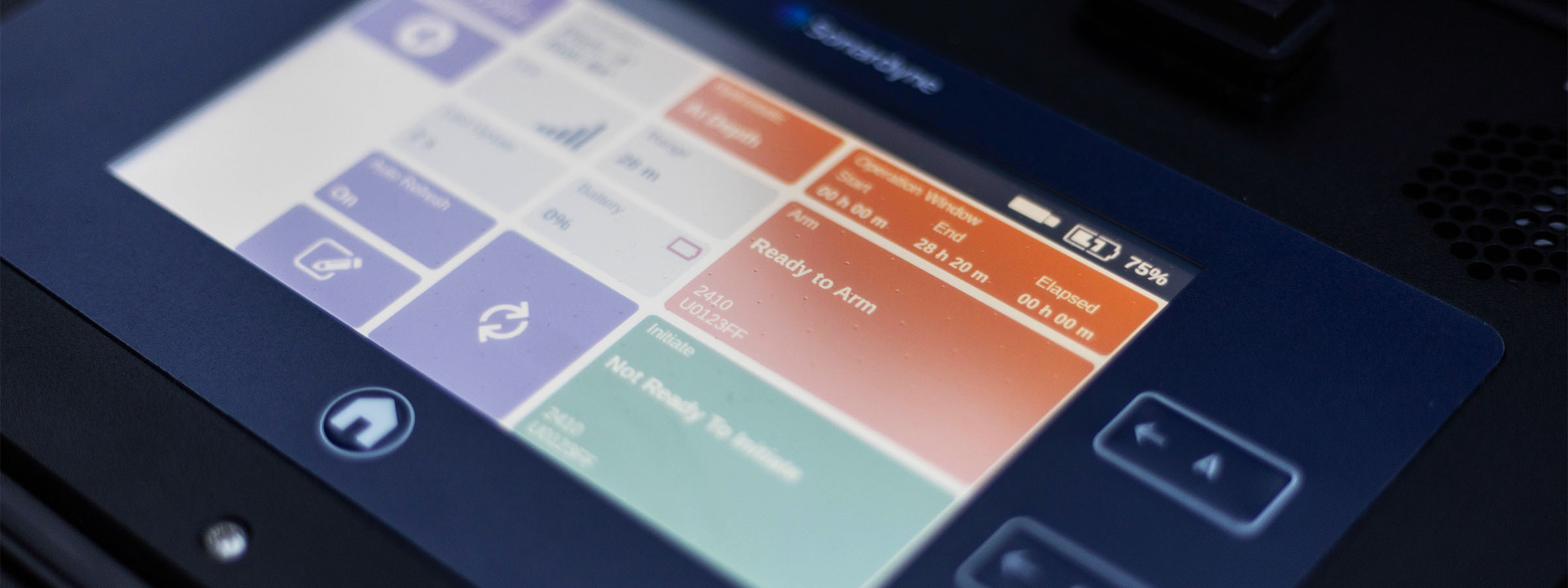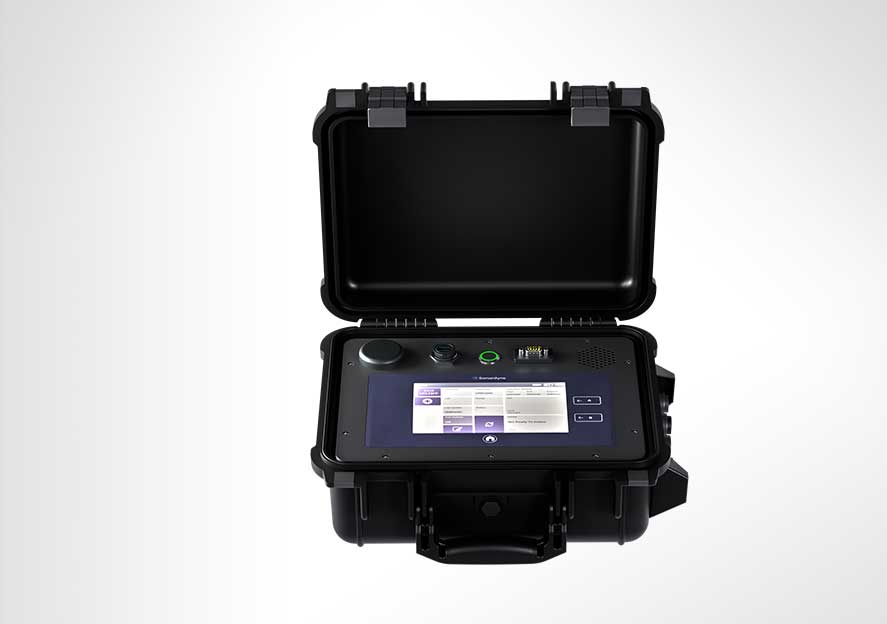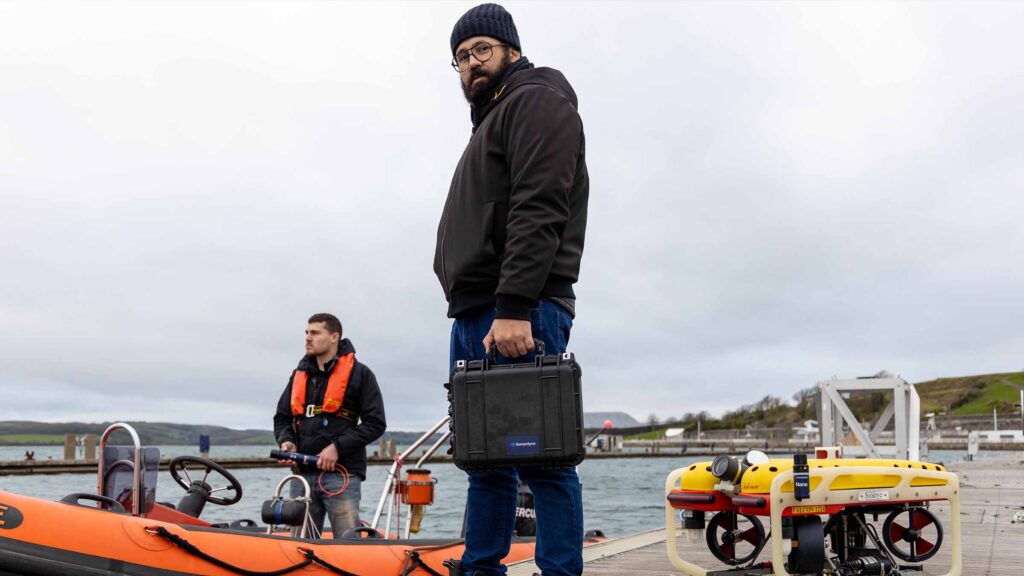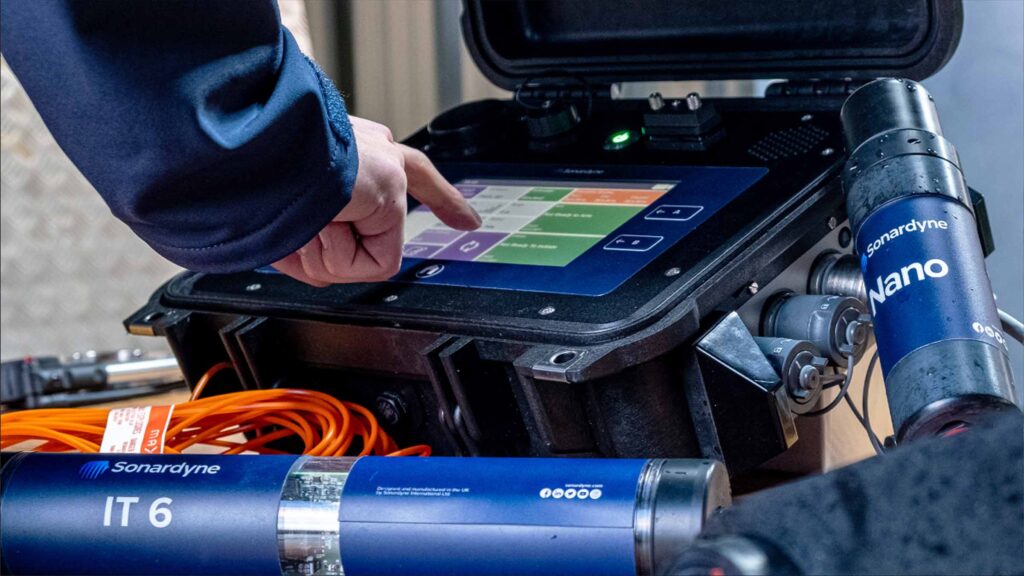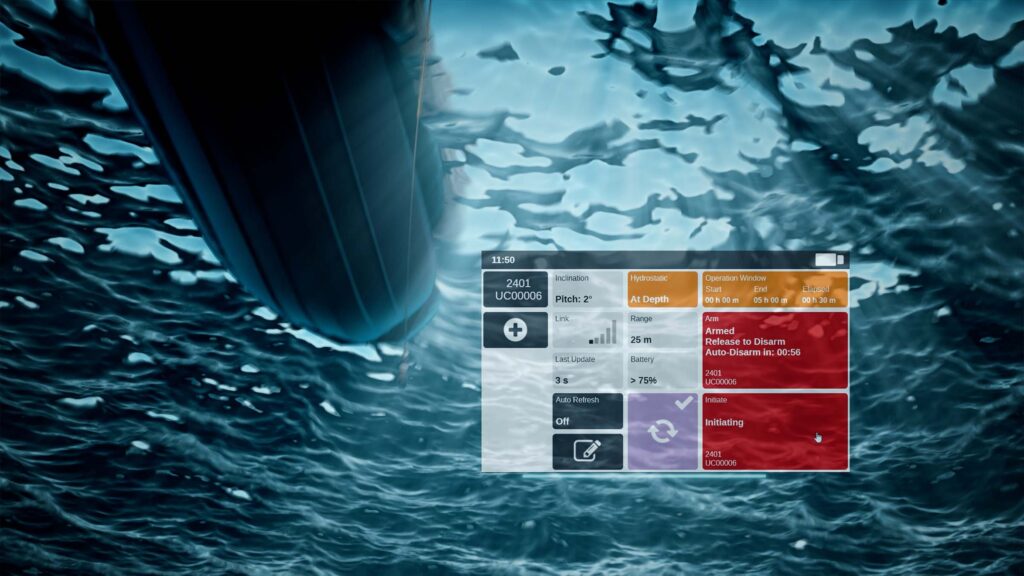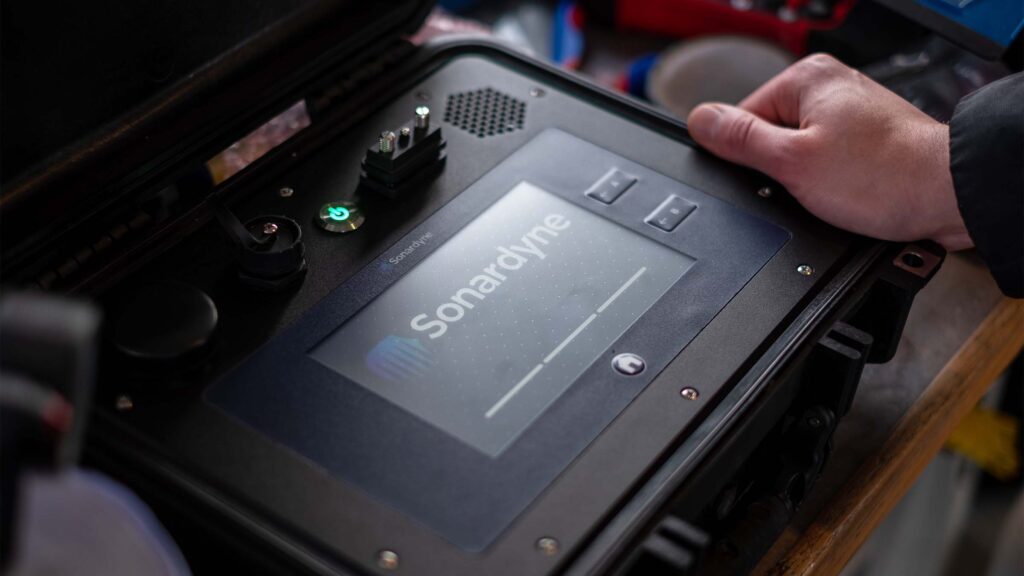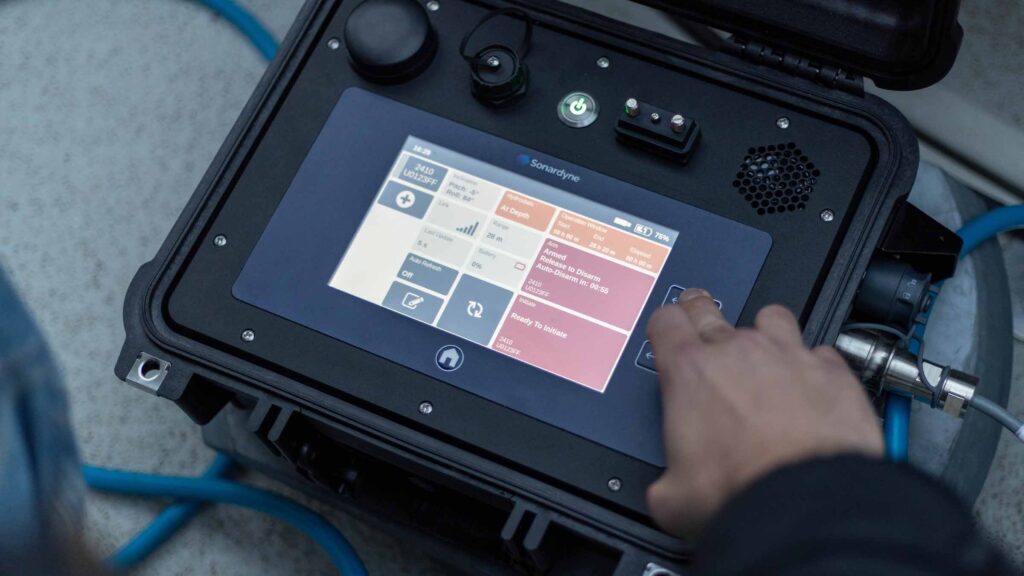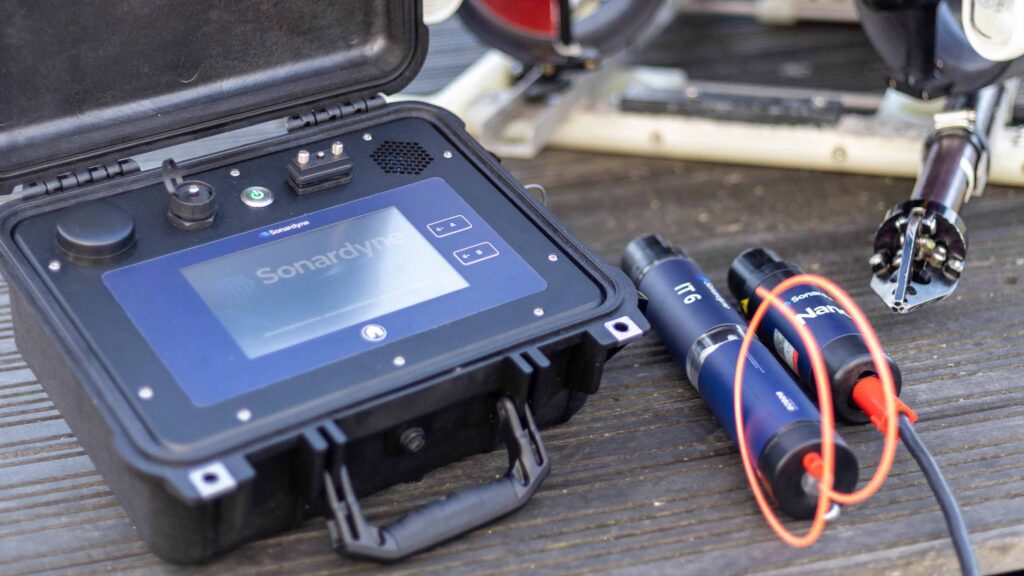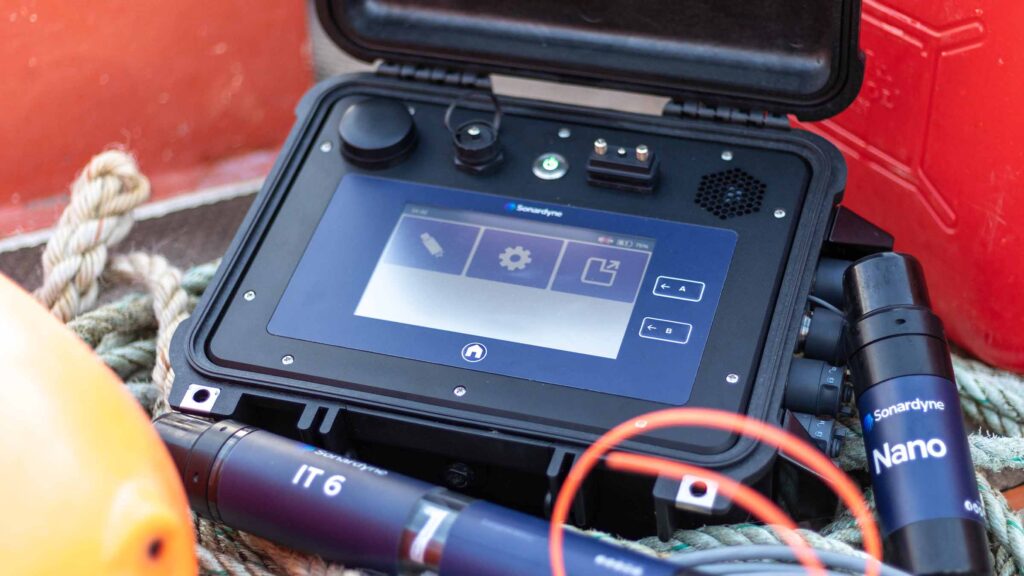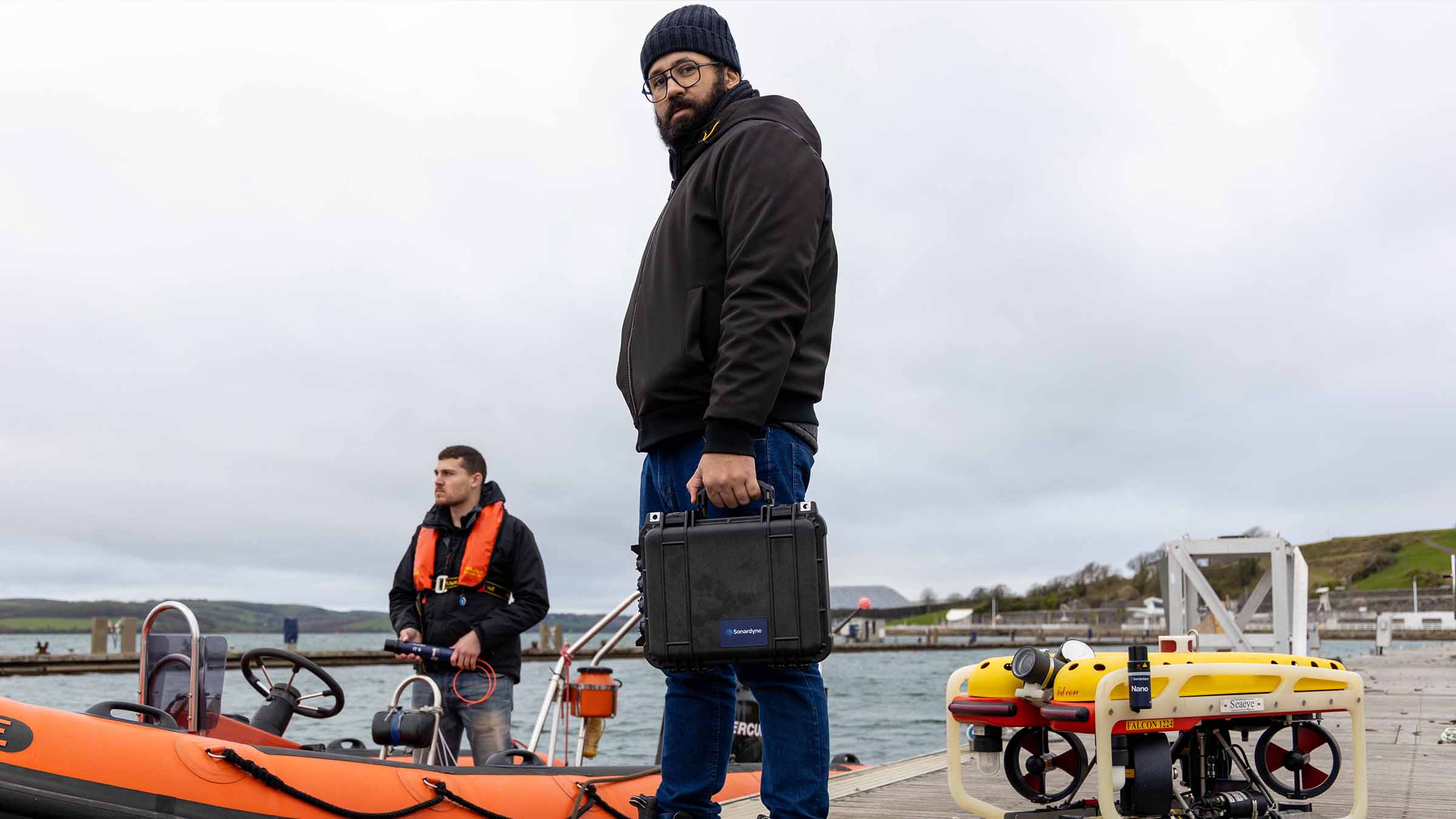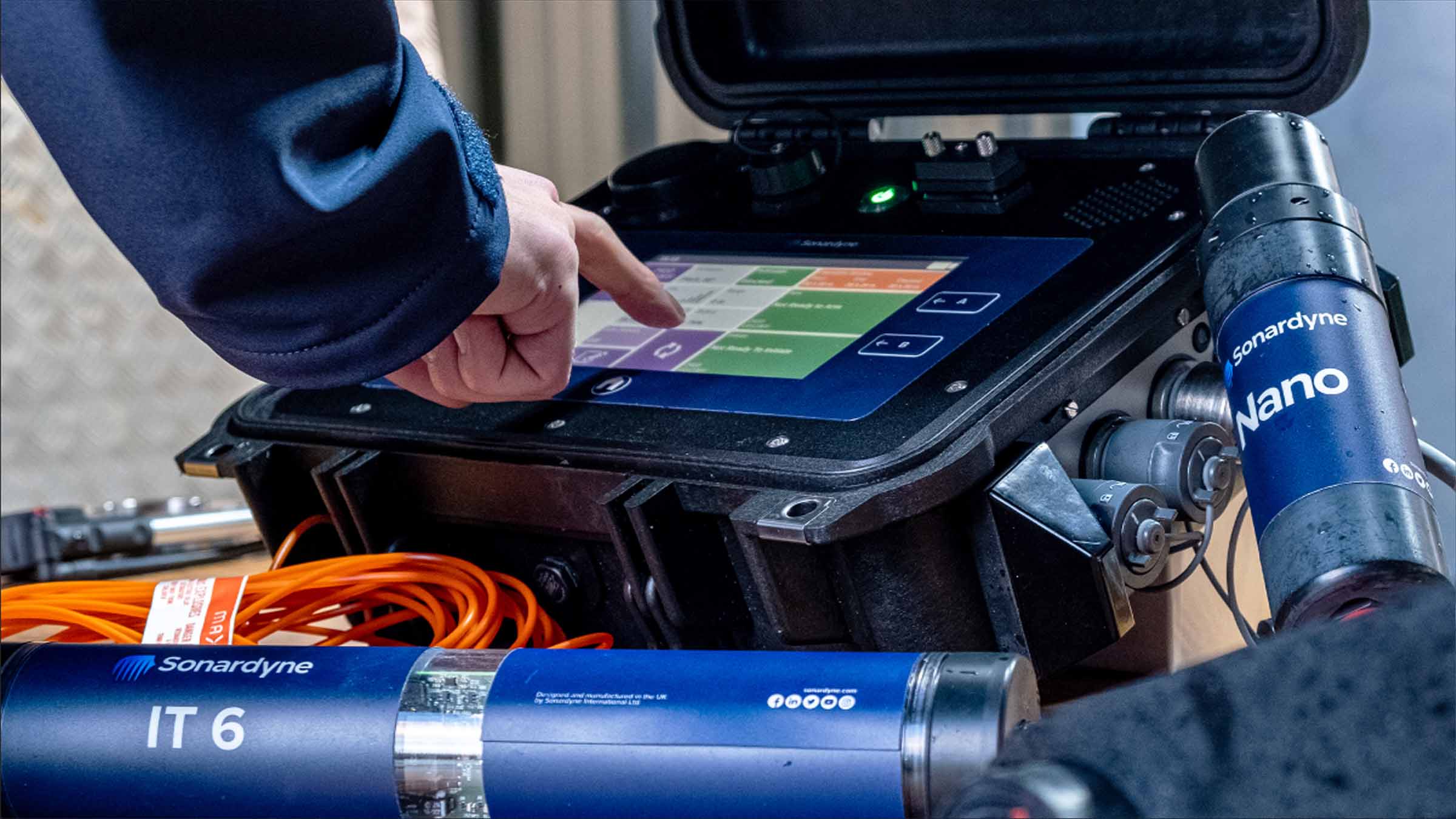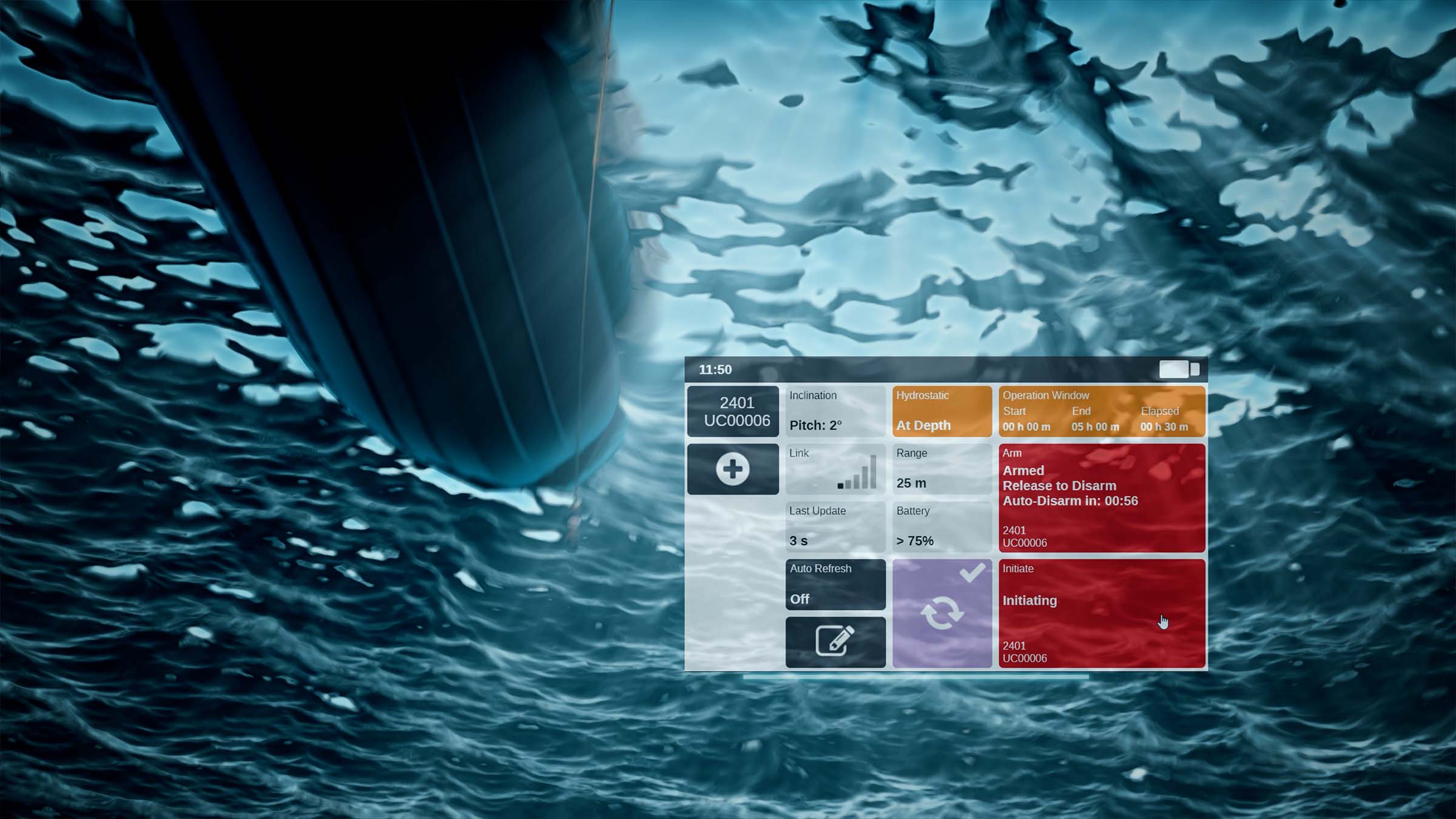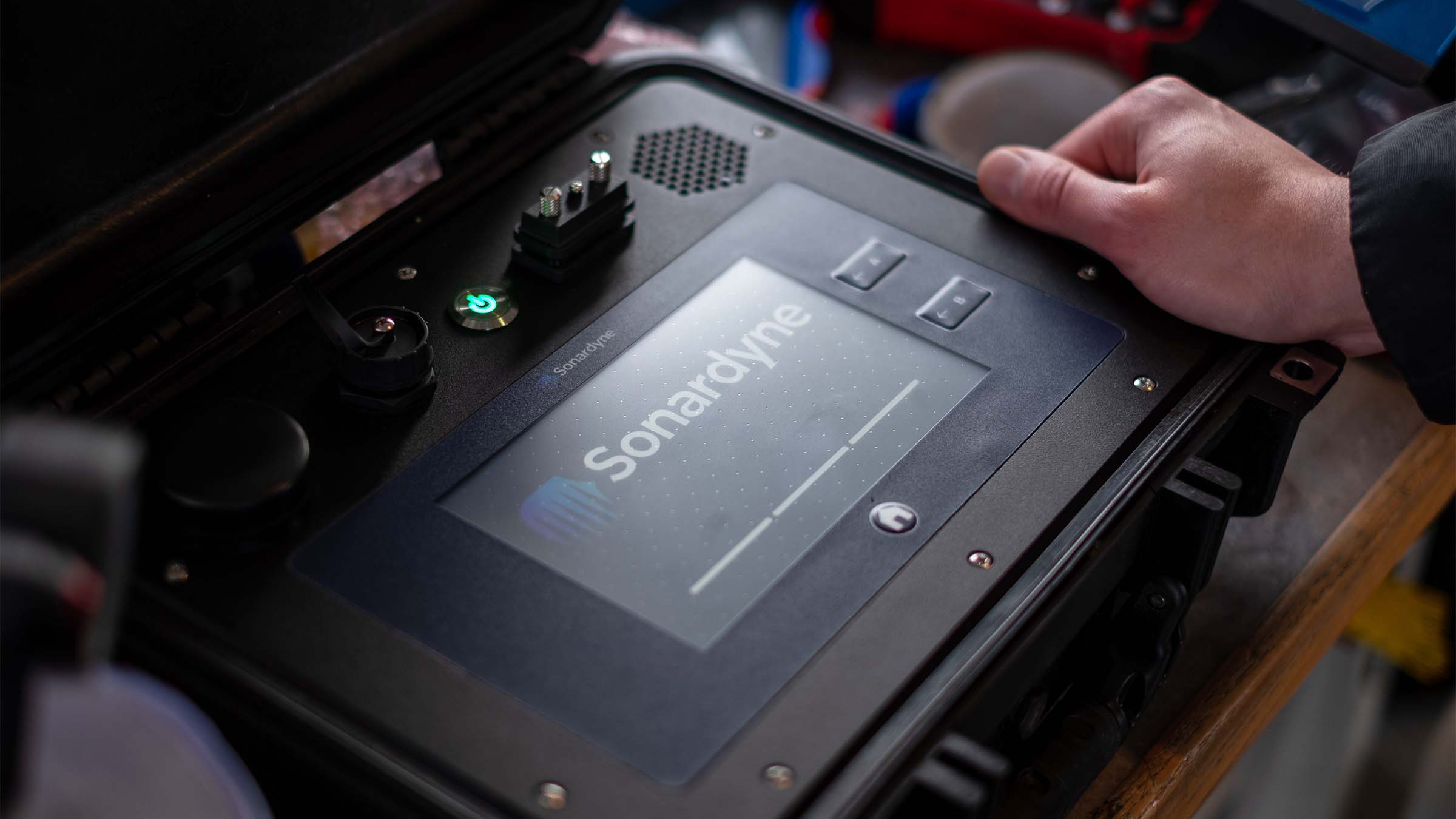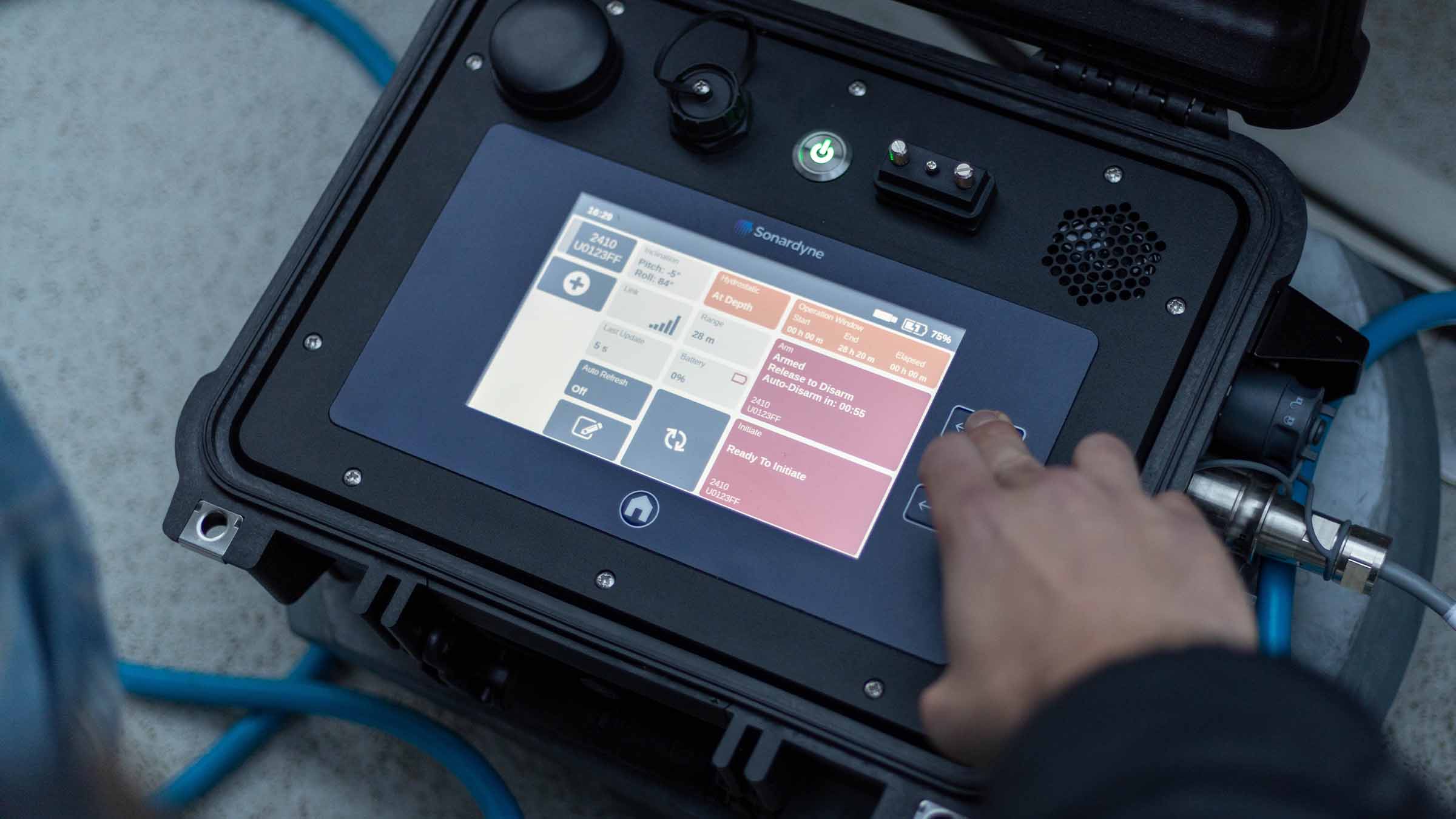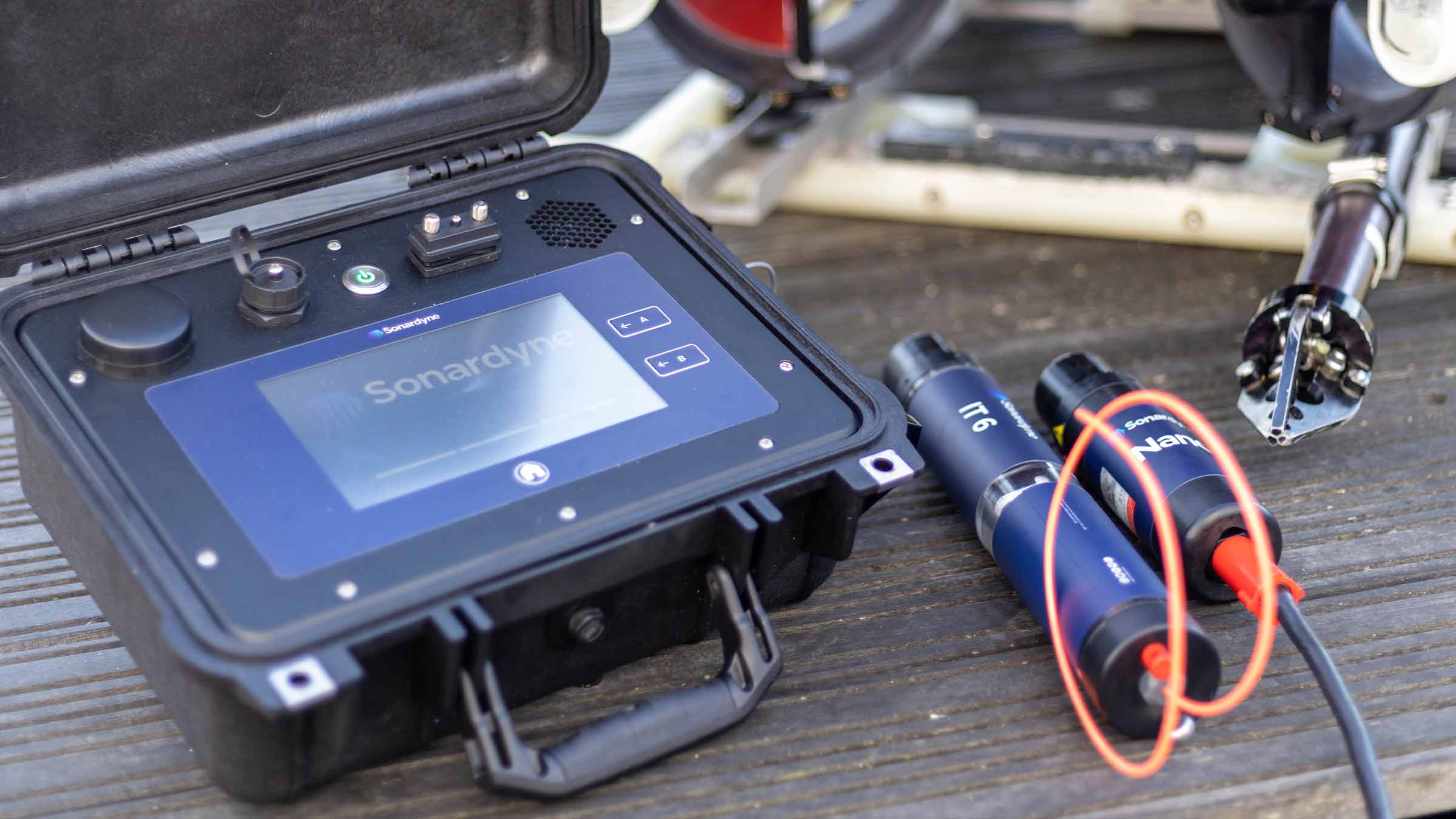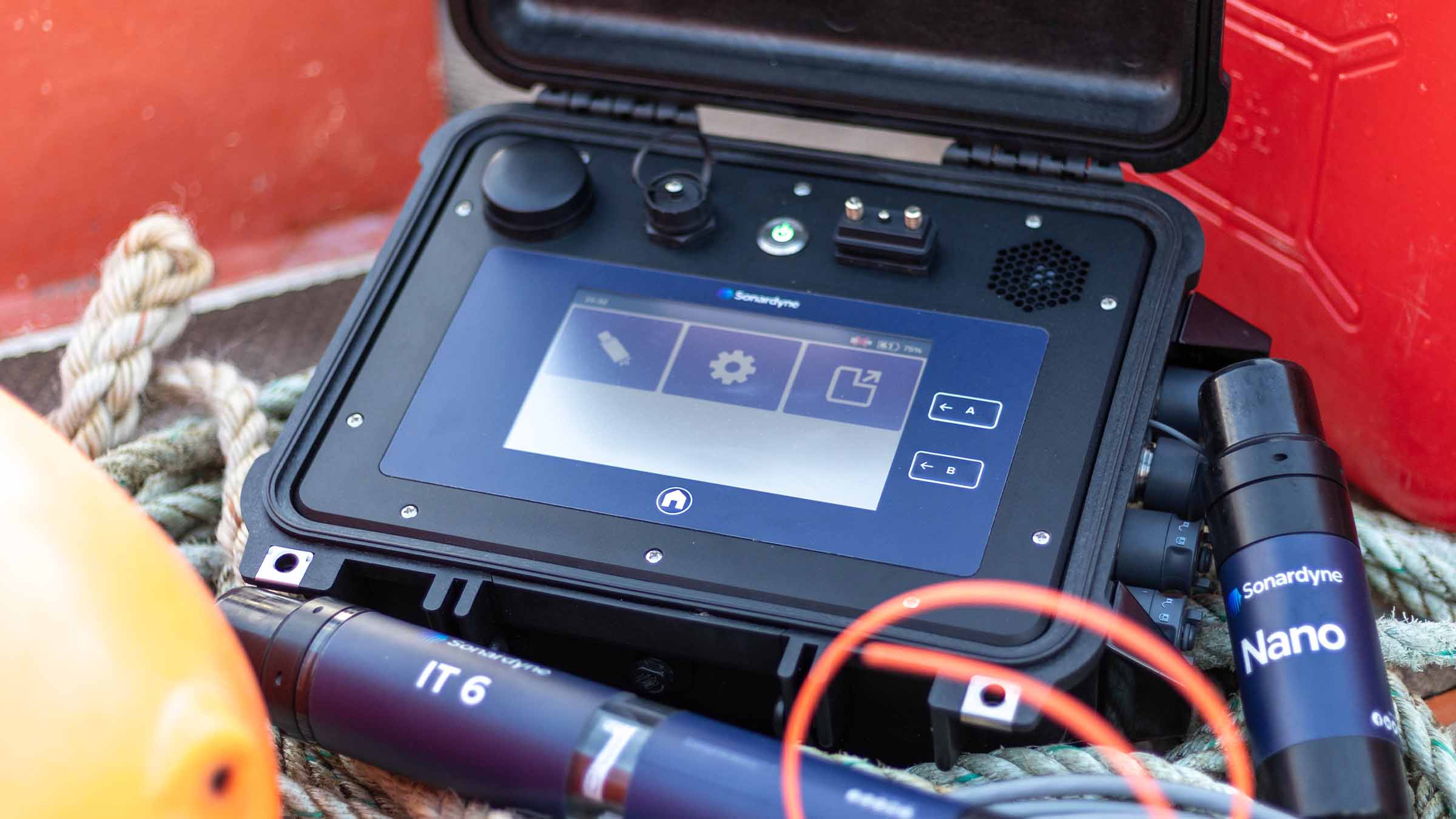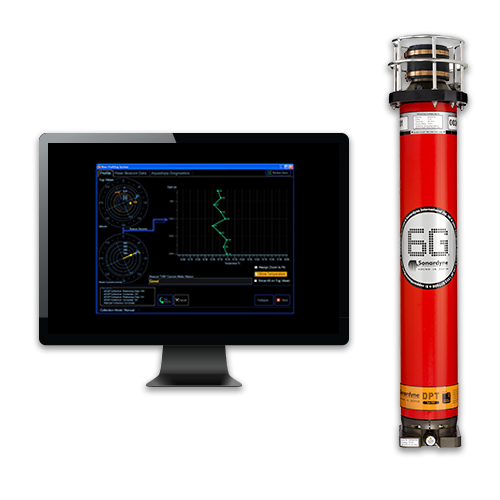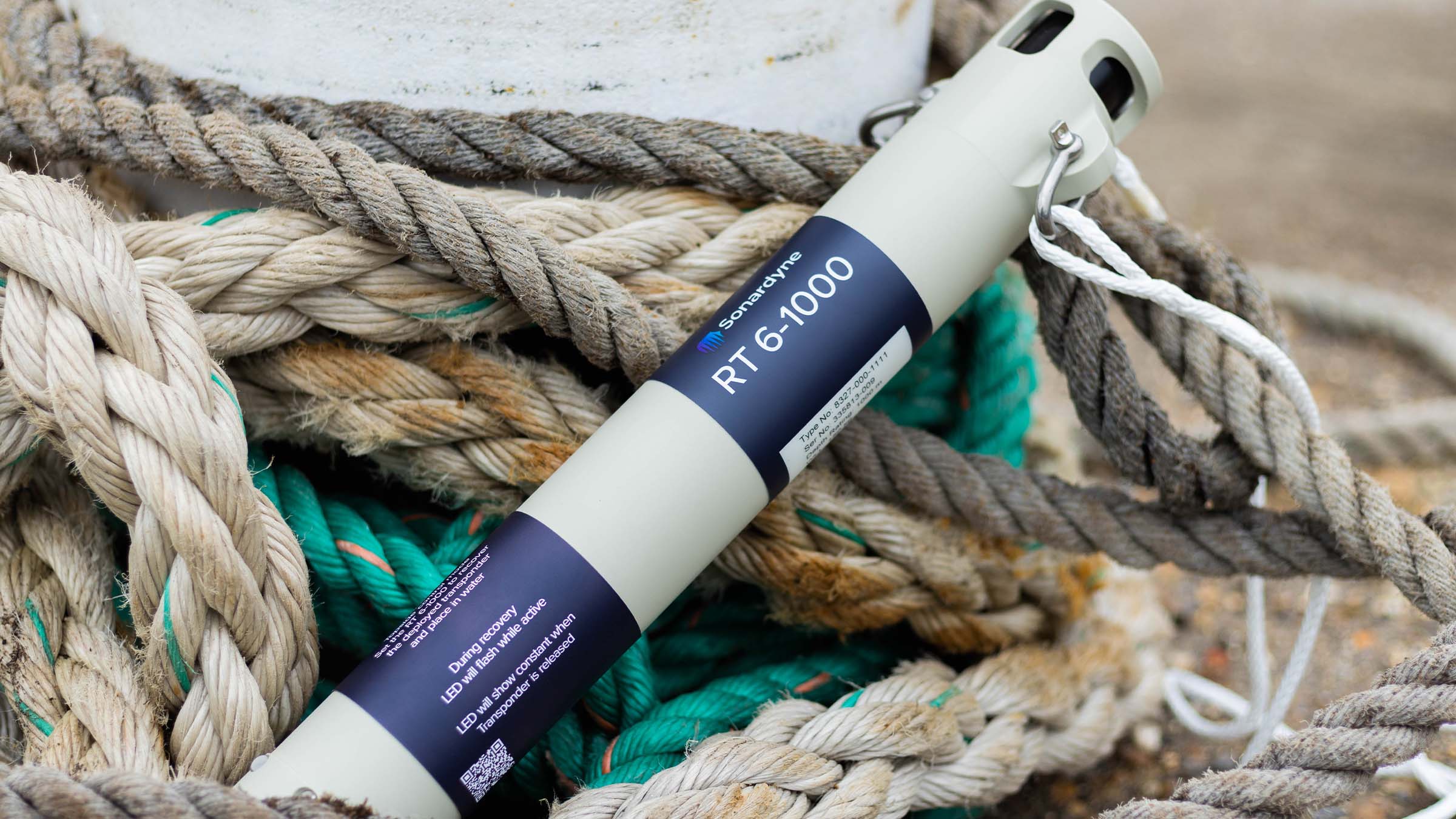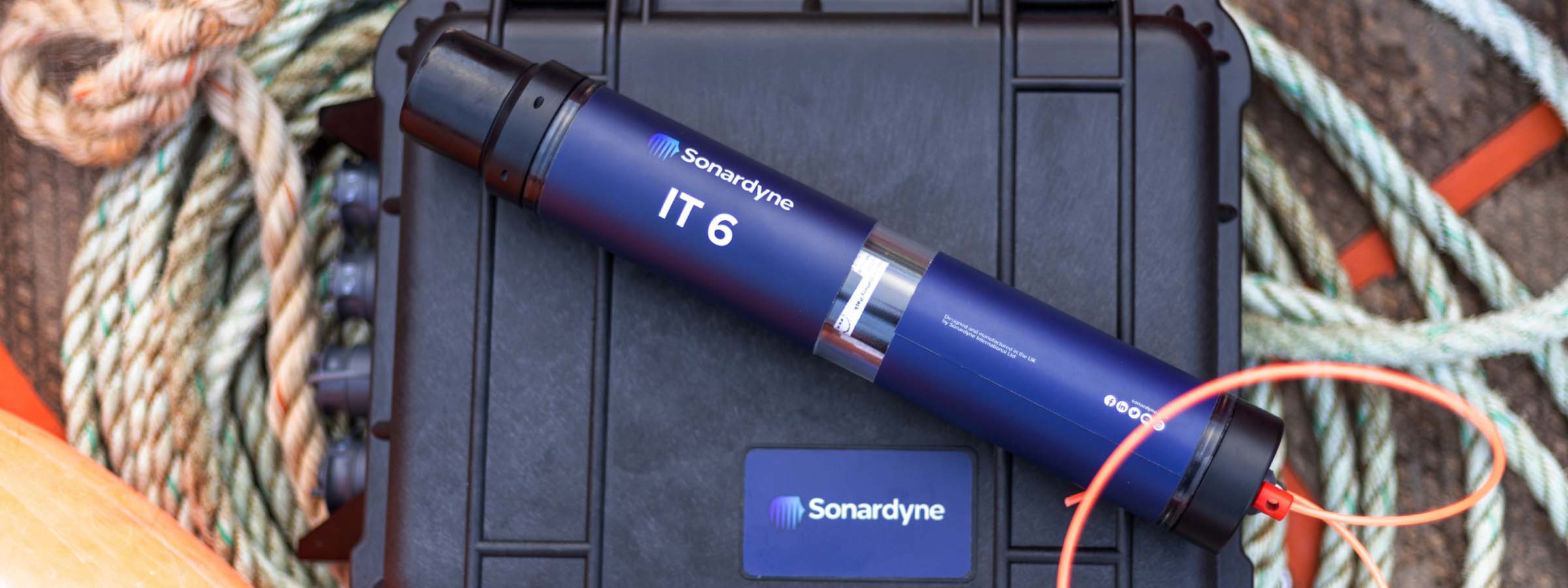Deck Topside
Pick your kit, operate at any depth
Deck Topside is the robust and versatile solution for commanding and controlling your Sonardyne acoustic release or initiation transponders, empowering you to navigate your operations with confidence and efficiency. The ability to support both types of transponder ensures you have the flexibility to meet your specific needs, whether it’s releasing underwater equipment or initiating mine neutralisation operations.
Deck Topside is supplied with cabled Nano dunker transceivers to enable command and control at any water depth and over any range. They simply plug into the transceiver port on the side of Deck Topside and are suspended over the side of your vessel. Ten metres of cable are supplied as standard with a 20-metre extension cable also available.
Depending on which RT6 you have, there are different deck kits available, from shallow to deep. The shallow water deck kit is a workhorse for your operations requiring ranges of less than 1, 000 m, so perfect with RT 6-1000. For operations deeper than this, our mid water and deep water deck kits are perfect. Use the mid water kit with RT 6-3000.The deep water deck kit utilises our long range, LMF-frequency band for use with RT 6 HD.
Tough and simple to use all day long
Deck Topside is completely portable and perfectly at home working in harsh marine environments.
It features a high brightness, full colour 7-inch resistive touch screen display and an easy-to-use user interface (UI) which allow a host of parameters to be set, including environmental. The unit is IP67 rated when closed and IP66 when open and being operated.
Power up and choose which mode you want Deck Topside to work in; RT 6 or IT 6. The UIs are easy to use and require no special knowledge of underwater acoustics. As touch screens are not suitable for every weather or stage of a marine operation, physical buttons are used for critical tasks such as arming, initiating and releasing.
Power comes from an 12/24 V dc external input, and for those situations when you’re operating from a vessel with no external power, a Lithium-Ion rechargeable battery provides up to 8 hours of continuous use.
After a successful operation, you can download system logfiles and operational reports. Deck Topside can export a complete set of activity logs for all activities, and a PDF report for releases.
Futureproof your investment with expandable capabilities
Deck Topside has been engineered to allow the addition of future features and developments via in-field software upgrades, protecting your investment in Sonardyne underwater technology.
At a glance
- Provides full configuration, testing and control of all RT 6s and IT 6
- Use it in the workshop, back-deck or from a small boat
- Engineered using industry standard ruggedised case; IP67 rated
- Rechargeable battery provides 8 hours of use; supports external power input
- 7-inch full colour touchscreen display; daylight readable
- Physical buttons for safety critical operational sequences
- Supplied with 10 m cabled Nano dunker
- Portable, rugged, secure
General
• One-box solution for the command and control of RT 6s and IT 6s deployed for equipment mooring, recovery and UXO operations
• Wireless: built using secure and robust digital acoustics communications suitable for any environment
• Small and rugged case engineered for use on the back deck
• Embedded, bespoke user interface for each mode – no special training needed
Design
• 7” resistive touch screen 1000cd/m2
• 340 x 295 x 152 mm, 4.8 kg weight in air
• IP rating: IP67 closed, IP66 open
• Power: 12/24 V dc input /8-hour lithium-ion battery (66 Wh)
• Built-in GNSS receiver and speaker (functionality currently not enabled)
Interfaces
• 2 x Ethernet connectors
• 1 x RS232/RS485 (to Sonardyne dunker, including power out)
• 1 x 12/24 V dc power input connector
• 1 x USB for data offload
• 1 x RS232 DB9 port
• Physical buttons: Power, Home, Safety Critical (x2)
Ownership
• What’s in the box: Deck Topside box, Nano dunker, 10 m deck cable
• Accessories: 20m deck extension cable, DC charging cable
• Warranty: 1 year return to Sonardyne service centre
• ITAR Controlled: No
• UK Export Licence: No
Specifications
| Feature | |
|---|---|
| Screen | 7” resistive touch screen 1000cd/m2 |
| Interfaces | Wi-Fi 2x Ethernet connectors, 1x RS232/RS485 (to Sonardyne transceivers, including power out), 1x 12/24 V dc power input connector, 1x USB for data export, 1x RS232 DB9 port |
| Buttons | Power, Home, 2x multi-function safety critical keys |
| Positioning | Built in GNSS |
| Sound | Built in speaker |
| Power | 12/24 V dc input 81 W max, 24 W charging, 8 W on external power, >8-hour lithium-ion battery (66 Wh) |
| IP rating | IP67 closed, IP66 open |
| Dunker cable | 10 m |
| Operating temperature | -20°C to +55°C |
| Storage temperature | -20°C to +60°C |
| Additional tests | Salt fog testing |
| Dimensions (length x width x depth) | 340 x 295 x 152 mm |
| Weight | 4.8 kg |
